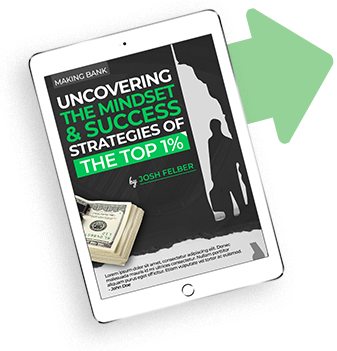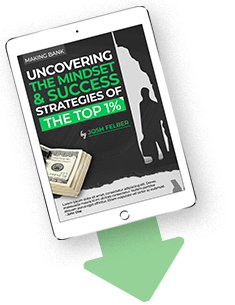
The 4 Factors of a Successful Product
Nowadays it seems like everyone wants to be an entrepreneur. While there’s nothing wrong with this, it’s still difficult to become a successful entrepreneur. So, this is where many entrepreneurs will share their advice on how they became successful. Some will focus on your business model – encouraging either a traditional or new form. Others will stress the importance of networking or hiring the right team.
All of these areas are imperative and are worthy of your attention. However, making strides in these aspects of a business only works when your product does. At the end of the day, your business is selling a specific product or service. The business won’t work if no one wants to buy that product.
The Importance of Your Product
On Season 6 Episode 18 of the Making Bank Podcast, guest Darshan Mehta chats about how to value your product. The owner of iresearch.com, Darshan has had years in product testing to see how potential customers will react to specific items or services. In that time, he’s seen what works and what doesn’t – across all industries. He lays out four factors that determine a product’s success.
Before we dive into those factors, you may have heard of how other entrepreneurs value a product’s viability. Some say that your product or service needs to solve a problem. Others say it needs to fill a gap in the market. While all of these are valid, they aren’t necessarily applicable to everything. There are some products that don’t do either of these things but still find success in customers. Darshan breaks down how to value a product across all fields.
So, what are the four factors of a successful product?
Time
What does a lawn service and a coupon app have in common? They save the customer time. The first important factor that customers look for in a product or service is anything that can save them time.
Time is money, as the expression goes, and people will pay to have more time. For example, a lawn service may be expensive to some, but it’s an expense many are willing to pay for in order to get their Saturdays back. If someone wants to spend more time with their kids but still have a mowed lawn, they’ll pay for that service.
Or perhaps someone wants to get into couponing but doesn’t know where to begin. Maybe they don’t have the time to cut out coupons or search the web for individual deals. Instead, they’ll download a couponing app that will aggregate those deals.
Whatever the case, if your product or service can save someone time, many people will be willing to pay for it – especially because time is the one thing we can never get back.
Money
The next important aspect of a product or service is if you can save your customers money. Saving the customer money seems like the traditional answer for a product’s success—and it is. While there are other factors at play, if you can provide something at a cheaper price than your competitors, you’ll always attract customers. Sometimes even a few dollars can go a long way.
Energy
Thirdly, if you can save your customer energy in some way, they will flock to that product or service. Part of the reason why online shopping keeps increasing every year is that it’s becoming more and more convenient. Why leave your house, drive to a mall, browse the mall, buy a shirt, and drive home when you can do all that in 3 seconds from your computer with a click of a button?
Or how about products like Roombas that clean someone’s floor? They may be more expensive than the average vacuum but now that customer doesn’t have to waste time – or energy – cleaning their house.
As we become increasingly busy as a society, someone’s energy will become just as valued as their time. Despite remote companies, people are spending more time working, driving their kids to activities, and trying to live their own lives too.
Products or services that preserve customers’ energy in some way will become more desired. Even if those services cost more, busy or bothered people will pay for it, as they always have.
Sometimes a task can be so small but can feel draining to the person performing it. That’s where simple products can come in and make bank off of that irritation. As silly as it sounds, sometimes the simplest product can have the largest impact.
Emotional Response
The fourth and final factor in a product’s success is people’s emotional response to it. As Darshan said in his episode, if you can solve one of the three previous elements, you have a solid product. If you have a product that touches on some of those aspects, you have a great product.
But if you have a product that can elicit an emotional response – in addition to saving time, energy or money – you will have a wildly successful product. To Darshan, a product with an emotional response can add 10x, 15x even 20x success to your business.
Let’s cover an example. Say you have a product that doesn’t save you any time, money or energy but causes the customer to feel something strongly. That product can still become an international sensation even though it is – in the traditional sense – useless. Not sold?
How about products like the Baby on Board sticker? What does the Baby on Board sticker actually accomplish for the customer? Does it save the customer time? Not really, it’ just a sticker. Money? Not so much – in fact, they spent money on the product. Does it save them energy? Perhaps, it can help reduce their worrying.
So, why is it so widely popular? It speaks to the parental instinct to protect – and it works. Whether or not the sticker causes people to be more mindful drivers, the product makes every parent who buys it feel just a little bit better.
So, if your product can speak to something in others, they will gravitate towards it – and buy it.


